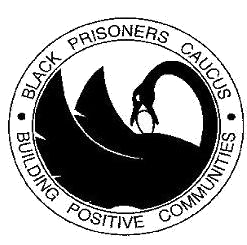March 23, 2013
by Dan Satterberg, the King County prosecuting attorney.
This report is the work product of people interested in change – some inside the criminal justice system, some from the private sector, and others who were formerly incarcerated. The goal is to increase the discussion around the shared responsibility to help with the reentry transition, and to make practical recommendations for increased government action” (pg. 2). The report contains recommendations to reform Washington’s system of reentry to improve outcomes for men and women released from the State’s prisons, to reduce crime, and to enhance public safety.
A report and recommendations and by the Black Prisoners’ Caucus starts on page 23.
The report on re-entry, “Investing in No Return,” can be found at http://seati.ms/opreentry
WASHINGTON state has invested a lot of public money over the past 30 years in our criminal-justice system. In fact, costs to the average taxpayer have more than doubled since 1980, up about 120 percent in inflation-adjusted dollars per taxpaying family. This public investment has built and operated prisons and jails, and put more police, prosecutors, public defenders and court staff to work to respond to crime.
While this investment in public safety has paid off — fewer victims as a result of serious crime decreasing more than 40 percent — there is one critical area of criminal justice that has not been embraced by leaders in the system: re-entry. We can do so much more to help people getting released from prison make a successful transition back into the community.
Washington has one of the lowest incarceration rates in the nation, yet 8,000 men and women will be released from prison back to the community this year.
Nearly 50 percent of the people sentenced to prison last year had been there before, and 30 percent of the people released today will be back within three years of release without more effort aimed toward re-entry support.
One in five men sent to prison were homeless when they were arrested, and an increasing number are developmentally disabled or suffering from traumatic brain injury. For these people, breaking the cycle of criminal behavior requires more stability in the community.
Even amid drastic budget cuts in recent years that shrank programs and closed facilities, the Department of Corrections continues to find ways to better prepare people for re-entry before they leave prison. We do more to ensure that evidence-based programs proved to reduce recidivism target higher-risk individuals to maximize the benefit to public safety. We do more to help people earn their way to lower custody levels to ease their transition back to their communities, which has decreased the number of people who are released directly from maximum-custody units.
The department is taking advantage of the growing body of research on how to effectively address inmates’ aggressive behavior and provide them with coping skills that make them less likely to commit a new crime. Recent prison pilots have reduced the number of violent infractions in prison units by as much as 75 percent.
All of this is critical to re-entry, but the work we do in the prison system is only effective if it carries forward in the community. At the prison gate, most people receive $40 and a bus ticket back to the county where they received their first felony conviction. A small number receive 90 days of housing vouchers.
People leaving prison need the same things everyone else does to succeed: housing, food, clothing, a job or an educational opportunity. Some need peer support, family counseling, mental-health or chemical-dependency treatment. If a person cannot find a landlord who will rent an apartment to him or her because of their prison record, then he or she will be homeless, less stable, less likely to find a job and more likely to commit a new crime.
Providing people with job skills in prison does little good if no employers will hire them. State and local governments could provide tax incentives to employers to encourage them to take a chance and hire a new employee who is in transition. The Federal Probation and Parole system has been doing this for years.
The transition from prison to the community can be difficult, especially if all that awaits them is homelessness, hunger and hopelessness. It is no surprise that many people, frustrated with limited options, will return to the choices that got them into trouble in the first place. The benefits of re-entry programs and efforts are only fully realized if the community provides opportunities for people to succeed after incarceration.
The criminal-justice system has not set clear performance measures for successful re-entry. Although we monitor re-offense rates, we have not established shared goals for recidivism reduction. If we were able to reduce the recidivism rate even 10 percent, the savings in criminal-justice costs and public safety would be enormous. It should be our goal to convert formerly incarcerated people into law-abiding taxpayers. It can be done, if we act intentionally.
We believe it is time to include re-entry support in the criminal-justice infrastructure, and our immediate goal is to form a Seattle/King County Re-entry Commission to serve as a resource to city and county governments to increase capacity of transitional housing, employment, education and basic life-skills training to reduce recidivism.
“Investing in no return” should be the next great criminal-justice reform. We can improve public safety, reduce future criminal-justice costs and victimization, and restore the human potential lost by continuing to recycle people through the prison system.
